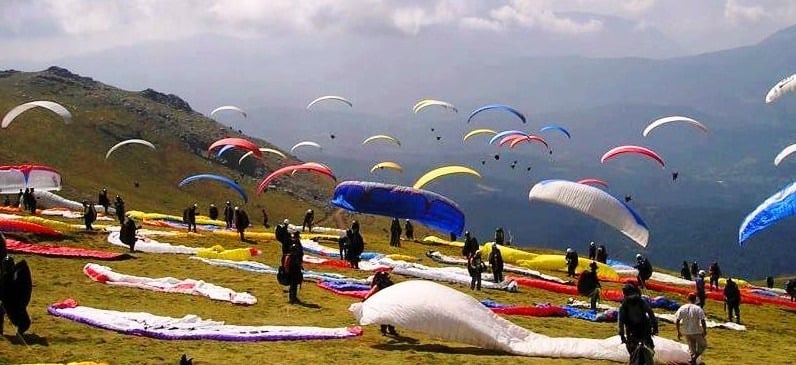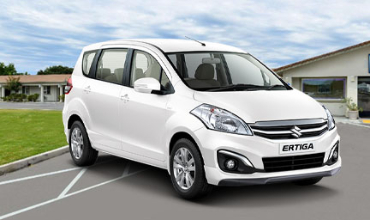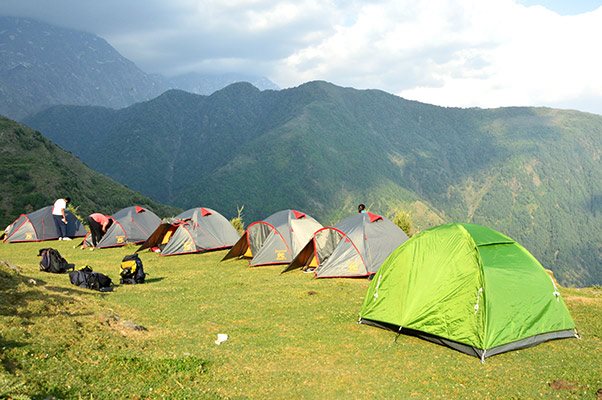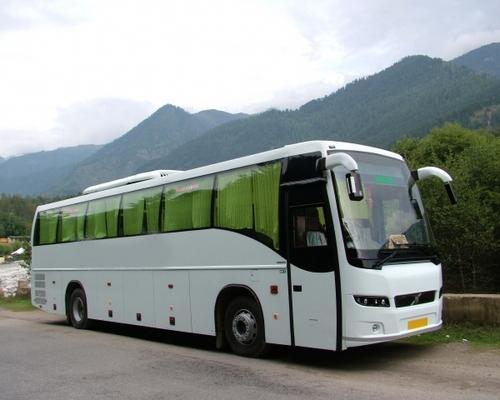Paragliding
Experience the thrill of paragliding with our comprehensive guide. Learn everything from basic concepts and equipment to safety tips, training, and top destinations worldwide.

Paragliding is an exhilarating sport that combines the freedom of flight with breathtaking views of the natural world. Whether you’re soaring above coastal cliffs or gliding over mountain valleys, paragliding offers a unique and unforgettable experience. This guide will cover everything you need to know to get started, stay safe, and make the most of your paragliding adventures.
Chapter 1: Understanding Paragliding
What is Paragliding?
Paragliding is a recreational and competitive adventure sport involving flying a lightweight, free-flying, foot-launched glider aircraft. The pilot sits in a harness suspended below a fabric wing, which consists of interconnected cells that form a wing shape when inflated by air pressure.
History of Paragliding
Paragliding has its roots in the 1960s when parachutists began experimenting with more controlled descents. The sport evolved rapidly with advancements in materials and design, becoming popular worldwide by the 1980s.
Chapter 2: Equipment and Gear
The Paraglider
The paraglider itself is the most crucial piece of equipment. It consists of a canopy (wing), lines, and a harness. Modern paragliders are made from lightweight, durable materials like ripstop nylon.
Harness
The harness is the seat in which the pilot sits. It provides support, comfort, and safety features like back protection and attachment points for the reserve parachute.
Reserve Parachute
A reserve parachute is an essential safety device. It is deployed in emergencies when the main canopy fails or becomes unmanageable.
Helmet and Clothing
A helmet is mandatory for protection. Pilots should also wear suitable clothing for varying weather conditions, including gloves, boots, and windproof jackets.
Variometer and GPS
A variometer helps pilots monitor their altitude and rate of climb or descent. GPS devices assist with navigation and recording flight data.
Chapter 3: Getting Started with Paragliding
Finding a Paragliding School
Choose a reputable paragliding school with certified instructors. Look for schools affiliated with recognized paragliding associations like the USHPA (United States Hang Gliding and Paragliding Association) or BHPA (British Hang Gliding and Paragliding Association).
Beginner Training
Training typically starts with ground handling to master control of the wing on the ground. Once proficient, beginners progress to short solo flights under instructor supervision.
Paragliding Certification
Certifications vary by country but generally involve completing a set number of training flights, passing written exams, and demonstrating proficiency in various skills.
Chapter 4: Safety and Best Practices
Weather Conditions
Understanding weather conditions is crucial for safe paragliding. Pilots should avoid flying in strong winds, turbulent air, or approaching storms.
Pre-Flight Checks
Conduct thorough pre-flight checks of your equipment, including the wing, lines, harness, and reserve parachute. Verify weather conditions and flight plans.
Launching and Landing
Mastering takeoff and landing techniques is essential. Practice in safe environments with instructor guidance to build confidence and skill.
Mid-Air Safety
Always follow established flying rules and maintain situational awareness. Avoid crowded airspace and respect other pilots’ right of way.
Chapter 5: Advanced Paragliding Techniques
Cross-Country Flying
Cross-country flying involves traveling long distances by using thermals and wind currents. It requires advanced skills in navigation, weather assessment, and thermal flying.
Acro Paragliding
Acro paragliding involves performing aerobatic maneuvers like spirals, wingovers, and loops. It is a high-risk activity that requires specialized training and equipment.
Tandem Paragliding
Tandem paragliding allows an experienced pilot to fly with a passenger. It’s a popular way for beginners to experience paragliding without extensive training.
Chapter 6: Top Paragliding Destinations
Annecy, France
Known as the "Mecca of Paragliding," Annecy offers stunning lake and mountain views, ideal flying conditions, and a vibrant paragliding community.
Pokhara, Nepal
Pokhara provides spectacular flights with views of the Himalayas. It's a bucket-list destination for many paragliders.
Interlaken, Switzerland
Interlaken offers dramatic alpine scenery and consistent flying conditions, making it a favorite among paragliding enthusiasts.
Queenstown, New Zealand
Queenstown’s diverse landscapes and favorable wind conditions make it a premier paragliding destination.
Rio de Janeiro, Brazil
Fly over the iconic cityscape of Rio de Janeiro, with stunning views of the beach, mountains, and famous landmarks like Sugarloaf Mountain.
Chapter 7: Paragliding Competitions and Events
Types of Competitions
Paragliding competitions include cross-country races, acro contests, and precision landing events. Each type tests different skills and abilities.
Notable Events
Events like the Paragliding World Cup and Red Bull X-Alps attract top pilots from around the world. These competitions showcase the sport’s best talents and most challenging flights.
Chapter 8: The Future of Paragliding
Technological Advancements
Advancements in materials and technology continue to improve safety, performance, and accessibility. Innovations like lightweight wings and advanced navigation tools are shaping the future of paragliding.
Environmental Impact
Paragliding is a low-impact sport, but pilots are increasingly focused on sustainability. Initiatives include promoting eco-friendly practices and preserving natural flying sites.
Conclusion
Paragliding offers a unique blend of adventure, freedom, and connection with nature. By understanding the basics, investing in quality training and equipment, and adhering to safety practices, you can enjoy this thrilling sport safely and responsibly.
FAQs
1. Is paragliding safe?
Answer: Paragliding is generally safe when practiced with proper training, equipment, and adherence to safety guidelines. However, like any adventure sport, it carries inherent risks.
2. Do I need a license to paraglide?
Answer: Licensing requirements vary by country. Many countries require certification from a recognized paragliding association to ensure pilots have the necessary skills and knowledge.
3. How long does it take to learn paragliding?
Answer: Basic training can take a few days to a few weeks, depending on the frequency of lessons and individual progress. Achieving advanced proficiency can take several months or years.
4. What is the cost of paragliding equipment?
Answer: The cost of a full paragliding setup, including a wing, harness, helmet, and reserve parachute, ranges from $3,000 to $6,000. Second-hand equipment can be more affordable.
5. Can anyone paraglide, or are there physical requirements?
Answer: Most people can learn to paraglide, but it requires a reasonable level of fitness, good coordination, and the ability to run short distances during takeoff.
6. What should I wear when paragliding?
Answer: Wear comfortable, weather-appropriate clothing, sturdy boots, gloves, and a helmet. Layering is recommended to adjust for changing temperatures during flight.
7. How do I transport paragliding equipment?
Answer: Paragliding equipment is relatively compact and can be transported in a large backpack. Most wings and harnesses are designed to be lightweight and portable.
8. Can I paraglide in winter?
Answer: Yes, paragliding is possible in winter, provided you wear suitable clothing to stay warm. Some destinations offer excellent winter flying conditions.
9. How do thermals affect paragliding?
Answer: Thermals are upward currents of warm air that can lift paragliders to higher altitudes. Skilled pilots use thermals to extend their flights and travel longer distances.
10. What is the difference between paragliding and hang gliding?
Answer: Paragliding uses a lightweight, fabric wing and is launched by running off a slope, while hang gliding uses a rigid, delta-shaped wing and requires more complex setup and launch procedures.






